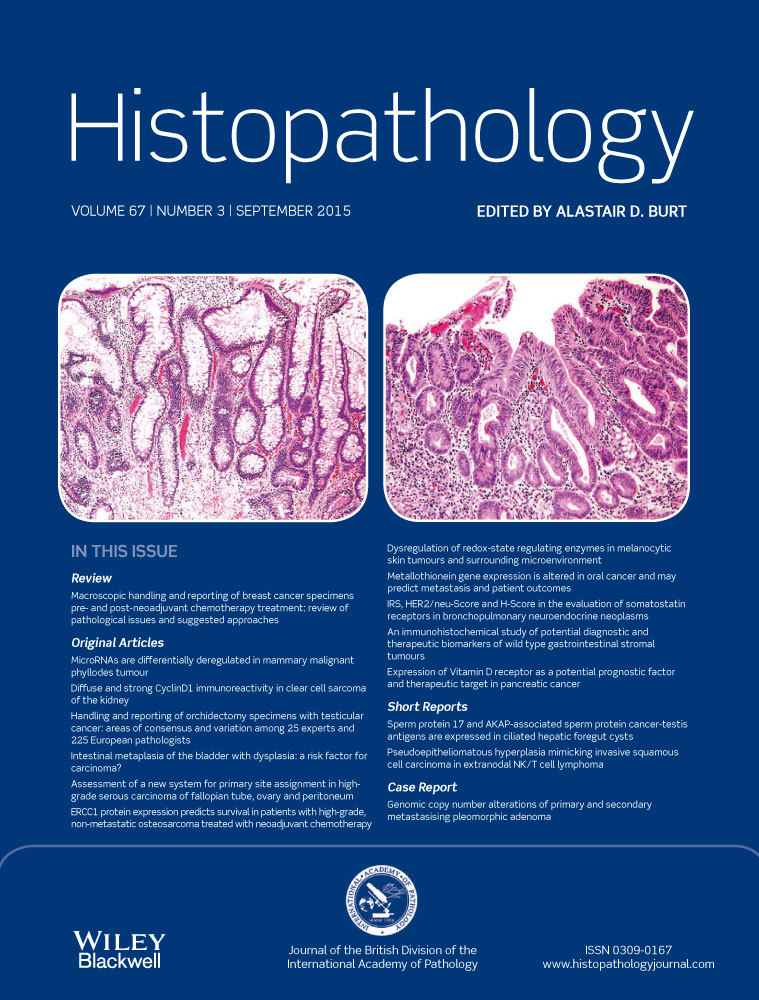Comparison of immunoreactive score, HER2/neu score and H score for the immunohistochemical evaluation of somatostatin receptors in bronchopulmonary neuroendocrine neoplasms
Abstract
Aims
Due to the growing number of somatostatin receptor (SSTR) targeting analogues and radiopeptides used for the diagnosis and therapy of neuroendocrine neoplasms (NEN), the assessment of SSTR subtype status has increasingly gained predictive value. In pathology, the SSTR protein levels are detected routinely by immunohistochemistry (IHC); however, a lack of a standardized evaluation system persists. Thus, in the present investigation, three well-established semi-quantitative scoring systems [immunoreactive score (IRS), human epidermal growth factor receptor 2 (HER2)/neu score, H score] used commonly for SSTR-IHC evaluation in NEN were compared.
Methods and results
A total of 240 formalin-fixed, paraffin-embedded tumour samples from 90 patients with bronchopulmonary NEN were examined by IHC and quantitative reverse transcription–polymerase chain reaction (qRT–PCR) for SSTR1, 2A, 3, 4 and 5 expression. Using both methods, SSTR1, 2A and 5 were the most frequently expressed subtypes. For all SSTR subtypes, all three scores correlated well with each other and with qRT–PCR data. However, the IRS was the most meaningful score with the best correlation to mRNA levels.
Conclusions
Because a unified IHC scoring system for SSTR analysis is needed urgently to optimize the theranostics of NEN, among the scores tested, the IRS seems to be the most suitable according to our results. It provides sufficient accuracy combined with high practicability.




